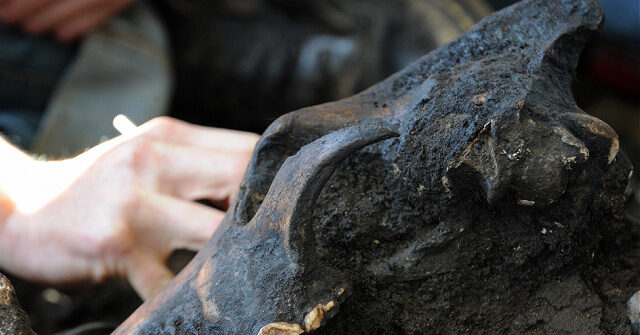Scientists have reportedly genetically engineered dire wolves back into existence despite them being extinct for over 10,000 years.
A lengthy profile in TIME announced the scientific breakthrough on Monday with an expressed hope that the technology and methods used by Colossal Biosciences could potentially revive the woolly mammoth or preserve currently endangered species like the red wolf in North America or the quoll (a marsupial) in Australia.
The dire wolves went extinct in North America roughly 10,000 years ago from what scientists believe was the animal’s distinct hunting method of preying on larger animals as opposed to a more generalized hunting practice of smaller prey. According to Colossal’s chief scientist, Beth Shapiro, resurrecting the dire wolves involved taking blood cells from the living gray wolf and using gene editing technology (CRISPR) to genetically modify the cells in 20 different sites. This genetic material was then transferred to an egg cell from a domestic dog to create embryos that were then transferred to surrogates. The dire wolf pups gestated for 62 days with little complication before birth.
“We elected to put both pups with the surrogate who was displaying the best maternal instincts,” said Matt James, the company’s chief animal officer. “That reintroduction occurred just about two or so hours after birth, and she immediately began caring for them and allowing them to nurse.”
“The idea that we could just take a vial of blood, isolate EPCs, culture them, and clone from them, and they have a pretty high cloning efficiency, we think it’s a game changer,” said George Church, Colossal co-founder and professor of genetics at both Harvard University and the Massachusetts Institute of Technology (MIT).
The dire wolves have since been housed on a 2,000-acre ecological preserve at an undisclosed location somewhere in the United States.
“The 2,000 acres are surrounded by a 10-ft. fence and include a smaller six-acre site with a veterinary clinic, an extreme-weather shelter, and natural dens where the wolves can satisfy their innate desire for a secure retreat,” reported TIME. “A staff of veterinarians looks out for the animals around the clock.”
“The wolves are fed a diet of beef, horse, and deer meat as well as liver and other offal, along with puppy chow to provide vital nutrients. When they were just weaned, the meat was served pureed, which is similar to the partially digested meat a mother will regurgitate to feed her young,” it added.
The wolves have not killed any potential small or live prey that may have wandered into the enclosure, and the wolves have exhibited some characteristics analogous to hunting instincts. Colossal said it has no plans to reintroduce the wolves into the wild, recognizing that they could negatively effect biodiversity and did not indicate if it plans to have the wolves procreate.
Skeptical scientists, however, did caution against viewing the dire wolves as little more than genetically modified gray wolves with dire wolf characteristics — essentially a gray wolf in dire wolf clothing.
“All you can do now is make something look superficially like something else,” Vincent Lynch, a biologist at the University at Buffalo, told the Associated Press (AP), adding that an identical resurrection would not be possible.
Colossal said that the technology could be put to worldly use by reviving endangered species and restoring some ecosystems back to homeostasis.
“Similar science might work to save the northern quoll, a small, carnivorous marsupial native to Australia. Quolls are threatened by the cane toad, which was introduced to Australia in 1935 in an attempt to control beetle pests that were devouring sugarcane roots,” noted TIME. “The experiment failed, with the toads showing no particular appetite for the target insects, all the while doing a fine job of feasting on other insect prey, and becoming an invasive species themselves.”
Paul Roland Bois directed the award-winning Christian tech thriller, EXEMPLUM, which has a 100% Rotten Tomatoes critic rating and can be viewed for FREE on YouTube, Tubi, or Fawesome TV. “Better than Killers of the Flower Moon,” wrote Mark Judge. “You haven’t seen a story like this before,” wrote Christian Toto. A high-quality, ad-free rental can also be streamed on Google Play, Vimeo on Demand, or YouTube Movies. Follow him on X @prolandfilms or Instagram @prolandfilms.
















